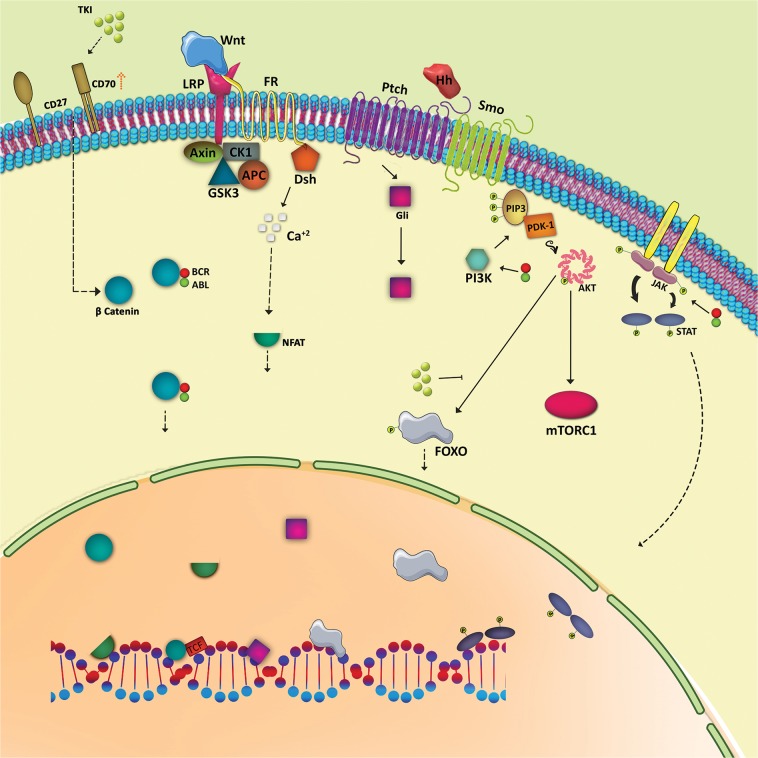Fig. 2.
Possible signaling pathways in CML LSCs. Binding of WNT to the frizzled receptor and LRP as co-receptor and activation of WNT/β-catenin is considered the normal signaling mechanism. However, stabilization and transduction of β-catenin into nucleus by P210BCRABL1 and stimulation of CD70-CD27 after TKI-therapy may be specific to CML LSCs. Activation of WNT/Ca2+/NFAT favors CML LSC resistance to imatinib. Attachment of Hedgehog signaling ligands to the Ptch receptor activates Gli family transcription factors. Induction of PI3K activity by P210BCRABL1 phosphorylates PIP2 resulting in recruitment of PDK1 which phosphorylates AKT activating mTORC1 and sequesters FOXO transcription factors. TKI-therapy enhances nucleus localization of FOXOs increasing survival of CML LSCs. Activation of JAK/STAT signaling by P210BCRABL1 also increases survival of CML LSCs

